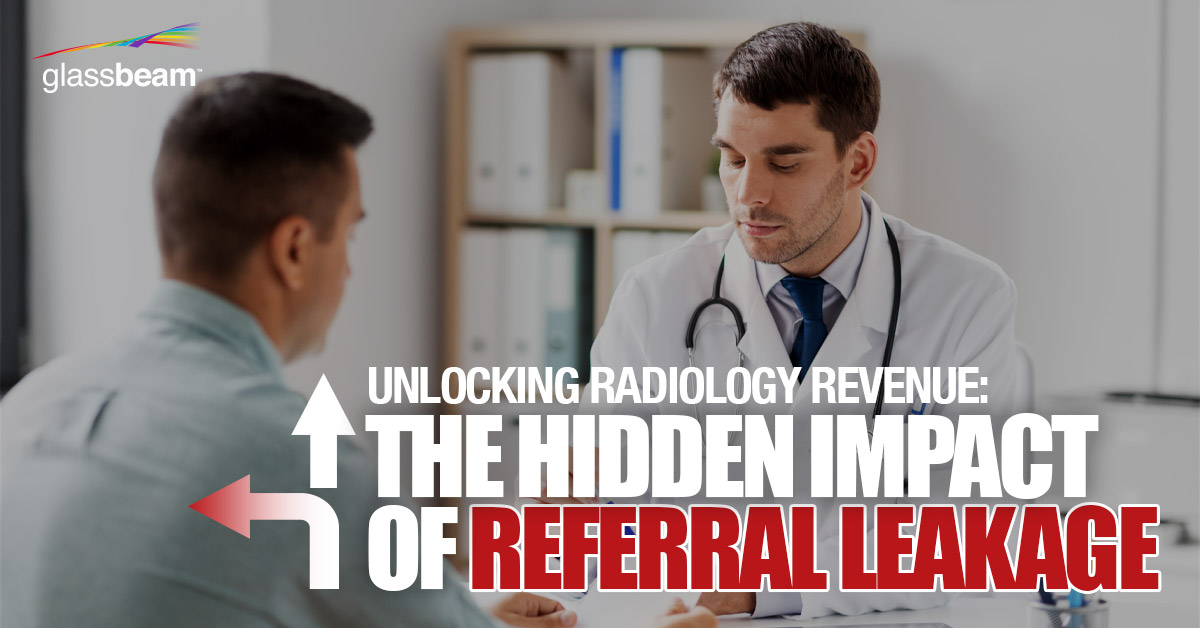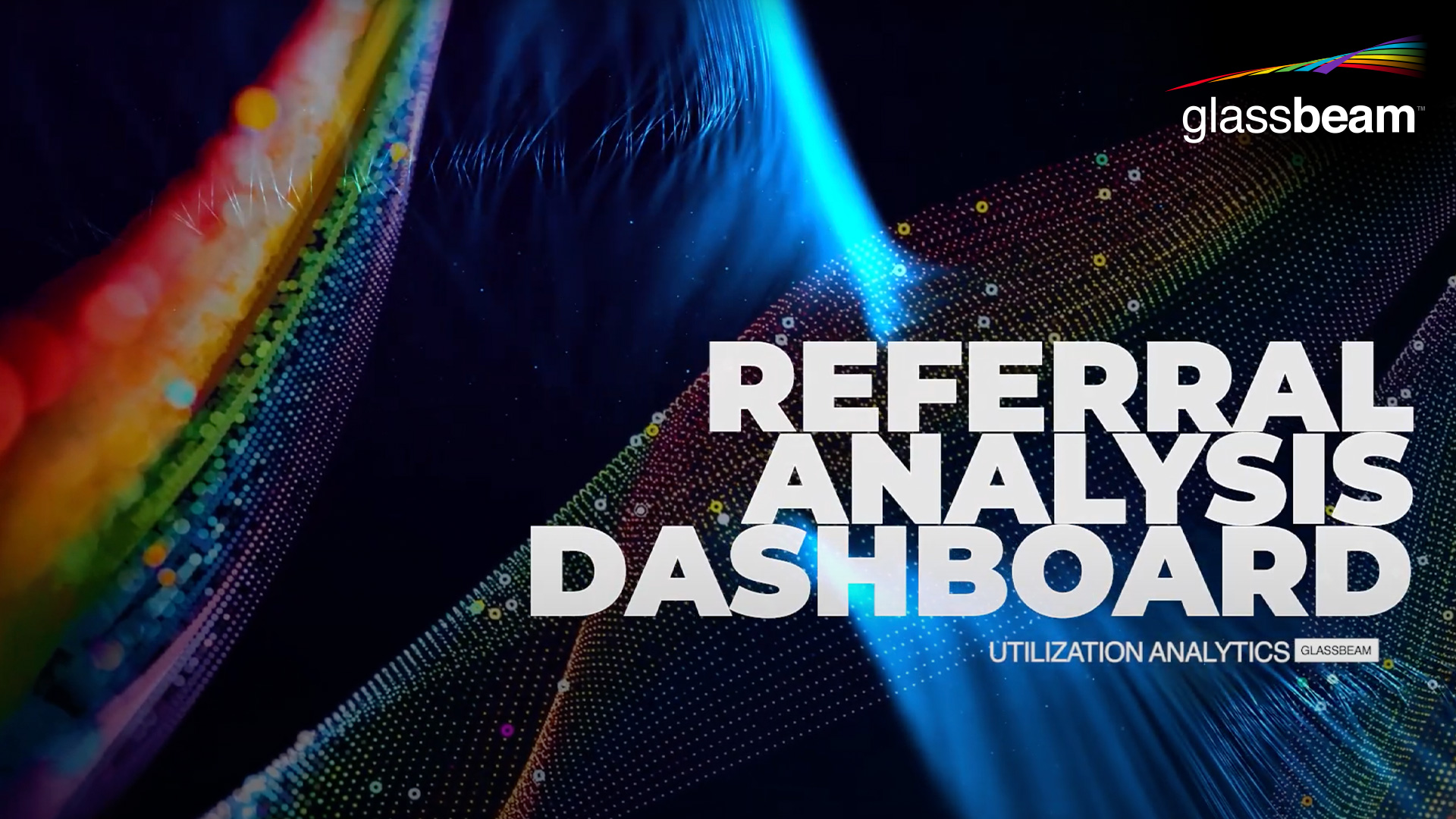
Unlocking Radiology Revenue: The Hidden Impact of Referral Leakage
Revenue leakage as a result of patient referrals to outside providers is a common disruption cost that many providers do not track. Loss of patient referrals to other imaging centers or facilities can have significant implications for exam volume, patient retention, and financial stability within radiology departments. It is important to be aware of technology changes available to help reduce leakage.
In this article, we will explore physician referral leakage, its impact on radiology departments, and how implementing referral analysis dashboards can help mitigate revenue leakage and its associated disruption costs.
Understanding Referral and Revenue Leakage in Radiology
Physician referral leakage occurs when physicians refer patients to providers outside of the healthcare system, even when those services are available within the system. This results in immediate revenue loss, reduced exam volume, and risks losing the patient’s ongoing healthcare engagement. Loss of revenue due to leakage can also impact the department’s financial ability to invest in the latest technology, further exacerbating the issue.
Dissatisfaction among referring physicians can influence their referral patterns, due to issues such as delayed information and insufficient or difficult referral processes. This dissatisfaction underscores the need for more efficient referral systems.
About one out of every three patients are sent to specialists annually. Referrals help ensure patients receive specialized care and diagnostics, but radiology departments should take proactive measures to minimize leakage and protect their income streams.
Importance of In-System Referrals
Around 79% of healthcare providers recognize the importance of in-network care coordination, yet 8 in 10 still opt to refer patients out-of-network. This highlights the challenges in keeping patients within an organization’s healthcare system. Patient referral leakage can occur for several reasons, discussed below.
Convenience
One of the primary contributors to leakage is physician convenience. For Example, when faced with scheduling process challenges within their healthcare system, referring providers may choose external imaging services for easier access.
Capacity
Physicians may refer patients to outside providers due to capacity issues within their own facility. Overburdened radiology departments can have longer wait times for appointments and exam results. When physicians perceive that external providers have more availability or faster turnaround, they may refer their patients there for timely diagnosis and treatment. To mitigate this, healthcare systems can expand their radiology capacity, improve scheduling efficiency, and optimize resource allocation. Asset utilization monitoring tools can help identify under/over utilized assets in order to optimize imaging equipment deployment.
Scheduling
Problems with appointment scheduling and patient rescheduling within radiology departments can be a significant driver of physician referral leakage. When patients face difficulty in scheduling or rescheduling appointments at their healthcare system, they may seek care elsewhere. To address this, healthcare organizations must streamline their scheduling and patient rescheduling processes, implement online scheduling tools, and prioritize patient convenience to reduce leakage.
Imaging Equipment Malfunction Downtime
Imaging equipment malfunctions and downtime can disrupt the radiology workflow, leading to longer wait times for diagnostic imaging services. When referring physicians experience delays due to imaging equipment issues, they may refer their patients to external providers with more reliable equipment. To minimize this form of leakage, radiology departments can invest in predictive service analytics tools to identify potential equipment failures before they happen, implement a regular equipment maintenance schedule, establish backup solutions for critical machines, and implement protocols for swift issue resolution.
Lack of Physician Expertise
In some cases, radiology specialists may lack the expertise required for specific diagnostic procedures or image interpretation. When faced with complex cases that fall outside their area of expertise, radiologists may refer patients to imaging centers known for their specialization. Healthcare organizations can mitigate this by offering continuing medical education and training opportunities, enabling in-house radiologists to handle a broader range of cases.
The Impact of Leakage on Radiology
The consequences of leakage extend beyond the diversion of patients to external providers. We discuss some of these consequences here.
Ineffective Referrals
Annually, nearly 20 million clinically inappropriate referrals occur due to a lack of essential specialist information available to referring offices. While 91% of healthcare providers acknowledge the importance of accessing provider specialty information, a surprising 7 in 10 continue to refer patients to the same specialist for a given specialty. The redundancy in referrals may indicate missed opportunities for better-suited specialists.
In addition, the referral process lacks transparency, with 25% to 50% of referring physicians being uncertain whether their patients actually consulted the recommended specialist. This ambiguity underscores the pressing need for improved communication and coordination.
Reduced Patient Retention
In some cases, patients may remain with outside providers after being referred out of the system, reflecting a loss of patient loyalty. Reduced patient retention can have significant financial implications and impede the performance of the healthcare system.
Loss of Revenue (leakage)
On average, hospitals can lose 10 to 30 percent of their revenue to patient referrals out of network. Approximately 55 to 65 percent of referrals are directed outside the network, contributing to healthcare system patient leakage costs of $821,000 to $971,000 per physician.
The annual financial toll ranges from $200 million to $500 million in annual losses, significantly impeding the ability of healthcare providers to invest in critical patient care initiatives. Overall, leakage costs US hospital systems $150 billion annually.
There is a lack of awareness within many healthcare systems. Studies indicate that 20 percent of healthcare management doesn’t know where or why patient leakage occurs, and 47 percent only moderately understand the issue. This lack of awareness perpetuates the financial strain.
Leveraging Referral Analysis Dashboards to Prevent Patient and Revenue Leakage
Over 87 percent of hospital executives agree leakage is a top priority, yet 23 percent do not have a plan to monitor or report leakage. To combat leakage, radiology departments can use referral analysis dashboards. These dashboards serve as tools for healthcare organizations to gain insights into their referral patterns, identify areas of leakage, and implement targeted strategies for retention and revenue protection.
Referral analytics and monitoring tools, like Glassbeam’s Utilization Analytics: Referral Analysis Dashboard (demo seen below) can include several important key features and benefits.
Data Visualization
Referral analysis dashboards present referral data in a visually intuitive manner, allowing healthcare administrators to quickly recognize trends, patterns, and areas of concern.
Identifying Leakage Sources
Dashboards can help pinpoint leakage sources, whether it’s specific referring physicians, patient demographics, or types of exams commonly referred to outside of the system. For Example, only 54 percent of faxed referrals become scheduled appointments. With referral analysis dashboards, radiology departments would be able to identify this discrepancy and make necessary changes to improve patient outcomes.
Real-Time Analytics
Referral analysis dashboards provide near real-time data, enabling healthcare organizations to respond promptly to emerging leakage trends and take corrective action.
Customized Reports
Dashboards can generate customized reports and insights, empowering healthcare administrators to tailor their strategies for mitigating leakage to specific needs.
Improved Communication
By sharing insights from referral analysis dashboards with referring physicians, healthcare organizations can foster better communication and collaboration. This is particularly crucial as 70 percent of specialists rate the patient referral information they receive as only fair or poor.
Approximately 20 percent of malpractice claims are attributed to missed or delayed diagnoses resulting from inadequate hand-offs between providers. For patient care, timely and complete communication is critical, with nearly 25 percent of U.S. patients reporting instances where records from one provider failed to reach another provider in a timely manner.
Efficient Resource Allocation
Armed with data-driven insights such as utilization analytics, radiology departments can optimize asset allocation, streamline scheduling processes, and improve the overall patient experience. These efforts will help reduce the incentive for patients and referring physicians to seek services outside the system.
Glassbeam provides ClinsightsTM Utilization Analytics, which has the ability to measure top physician referral patterns to target opportunities for growth through the Referral Analysis Dashboard.
Conclusion
Leakage in radiology is a challenge with implications for patient retention, revenue, and quality of care. Healthcare organizations can use referral analysis dashboards as data-driven tools to gain an understanding of the sources and patterns of physician referral leakage, and to implement targeted strategies for mitigation. By proactively addressing referral leakage, radiology departments can bolster patient loyalty, protect revenue streams, and provide high-quality, uninterrupted care, ultimately contributing to the overall success and sustainability of the healthcare system.
Explore the Possibilities
With more than 1 million exams examined each day by Glassbeam solutions, see how top organizations are transforming their log data into impactful insights.
Transform Your Healthcare Operations
See how to gain deeper, clearer insight from your machine data to elevate business intelligence and to improve your operational uptime, utilization, and efficiency.


